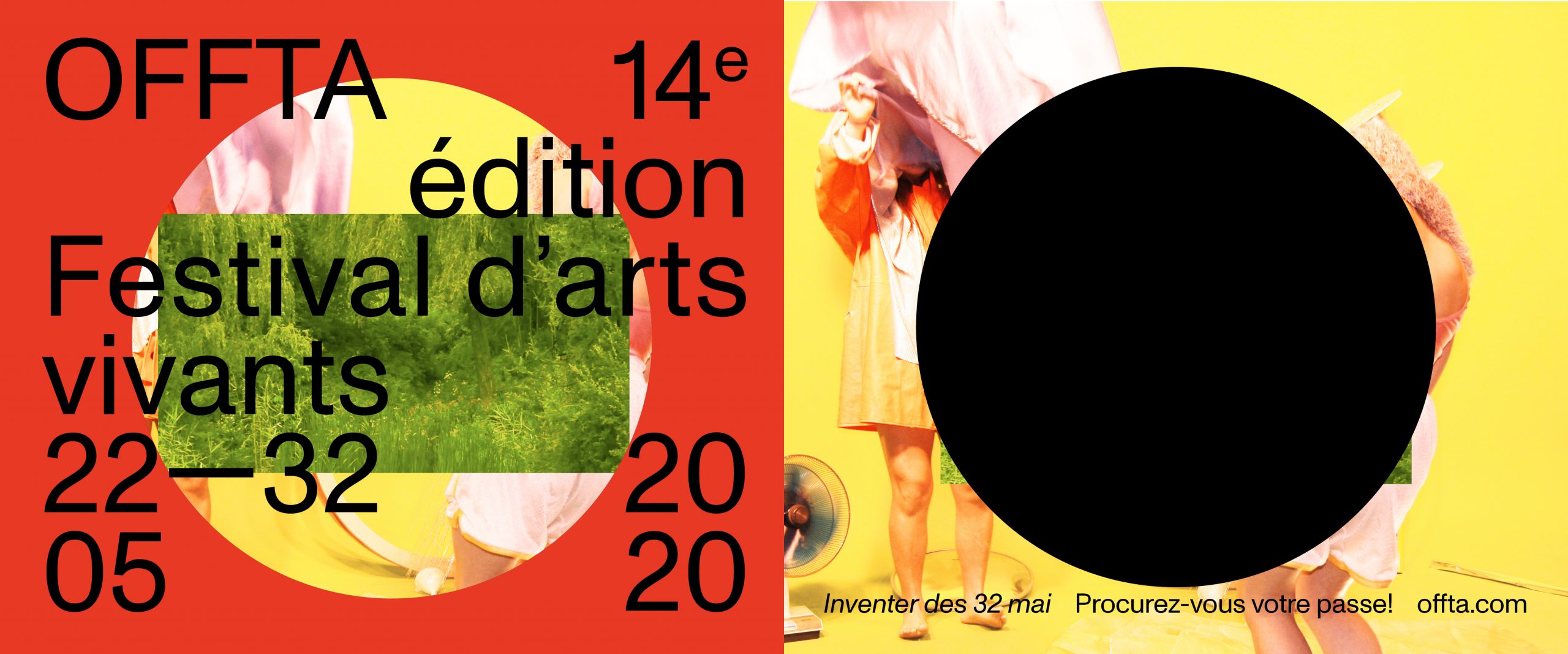Montreal’s 14th annual OFFTA festival has rethought its programming
An annual artistic event created in conjunction with the Festival TransAmériques (FTA), the OFFTA is a Montreal-based festival dedicated to avant-garde creation in live art. Produced by LA SERRE — arts vivants, a non-profit creation platform which works year-round to support local emerging performance artists, the festival will feature live art performances to be presented both online and outdoors, in an effort to adapt to social distancing.
This year, the festival will take place from May 22 to 32. Yes, you read that right. Another day, May 32. Similar to the reorganization that we are currently facing in our daily lives as a result of the pandemic, this new day was imagined to create a deceleration and allow for a new relationship with time. This edition brings together necessary artistic voices that tackle the idea of time, thereby inviting the public to reflect upon different realities.
“We wanted to give people more time to take in other temporalities, lending another rhythm to what might seem inevitable to us,” writes Vincent Repentigny, LA SERRE’s artistic and general director, in the editorial published on their website. “We tried to create new time, draft new calendars, imagine new interstices that we can fully occupy, coordinate widespread deceleration and abandon ourselves to this force that we cannot control.”
Amongst the fifteen live art creations that will be part of the festival, interdisciplinary artist Mélanie Binette will present her latest work. She is the co-founder of Milieu de Nulle Part, a collective interested in site-specific creation. The original version of her work, Errances, was created in memory of her father, who died of a heart attack at Theatre Maisonneuve in 2002. The interactive piece consisted of leading one person at a time, by the hand, through a walking tour of the underground corridors and the esplanade of Montreal’s Place-des-Arts.
In an effort to adapt to the current situation, Binette will not take participants by the hand for the OFFTA. Instead, to experience what Errances has become, they will be invited to go on self-guided walks in their respective neighbourhoods, while listening to an audio guide narrated by Binette.
To preserve the connection between the artist and the public, as one would have in the one-on-one experience, Binette invites participants to book a phone call with her to discuss their encounter with her work. The worldwide crisis we are going through is making mourning a part of our daily lives. Thus, Binette’s work proposes an opportunity to reflect on issues we are facing, both individually and globally.
While Binette’s piece takes the public outside, other performances will take place online. Hugo Nadeau’s work, Nous campions loin des endroits où la mort nous attendait, will be presented via Twitch Livestream. The audience will be invited to watch commentary of a video game created by Nadeau himself. Titled Nous aurons, the game is based in a post-apocalyptic world set in the year 2197.
Moreover, Toronto-based artists Andrea Spaziani and Matt Smith will present a rethought dance partition. Spaziani’s choreography explores the archetype of Venus, which she describes as an ensemble reconstruction of the feminine persona of Venus, displayed through aquatic behaviour. Titled Silver Venus Redux, this creation has been transformed for the OFFTA festival as a dance score to be watched, or listened to, with headphones. The audience will be able to listen to the recording of the sound of the six dancers performing the choreography, and to view images of the cinematic landscape of Silver Venus Redux by Alejandro Fargosonini.
In addition, OFFTA will be offering a series of five artist-driven round table discussions organized by Montreal-based interdisciplinary artistic collective PME-ART, titled Vulnerable Paradoxes. These discussions between artists and professionals will address questions, and raise issues, regarding the place of performance art in society and the relationship between performance artists and their audience.
Through its multifaceted interdisciplinary programme, the OFFTA will be an experimental laboratory for the artists and the public alike. Alone at home, participants will be confronted with their own thoughts, distractions, and maybe even with boredom.
“If we don’t know yet what will remain of the world that we are now leaving behind, or what to expect next, we make the daring gamble to invent a deconfined festival,” writes Repentigny, in a statement published on the OFFTA’s website. “We invited the artists to present original artworks, thus allowing their necessary voices to reach you.”
Via performances, balcony parties, discussions and interactive projects, the festival has planned various events to create a sense of community. The goal is ultimately to preserve the precious link between artists and their audiences, in whatever form it takes, despite the challenges that may arise.
In an effort to make the event as accessible as possible, people can choose to pay what they can through a variety of pass options. For OFFTA’s full program and schedule, and for further information, visit offta.com.
